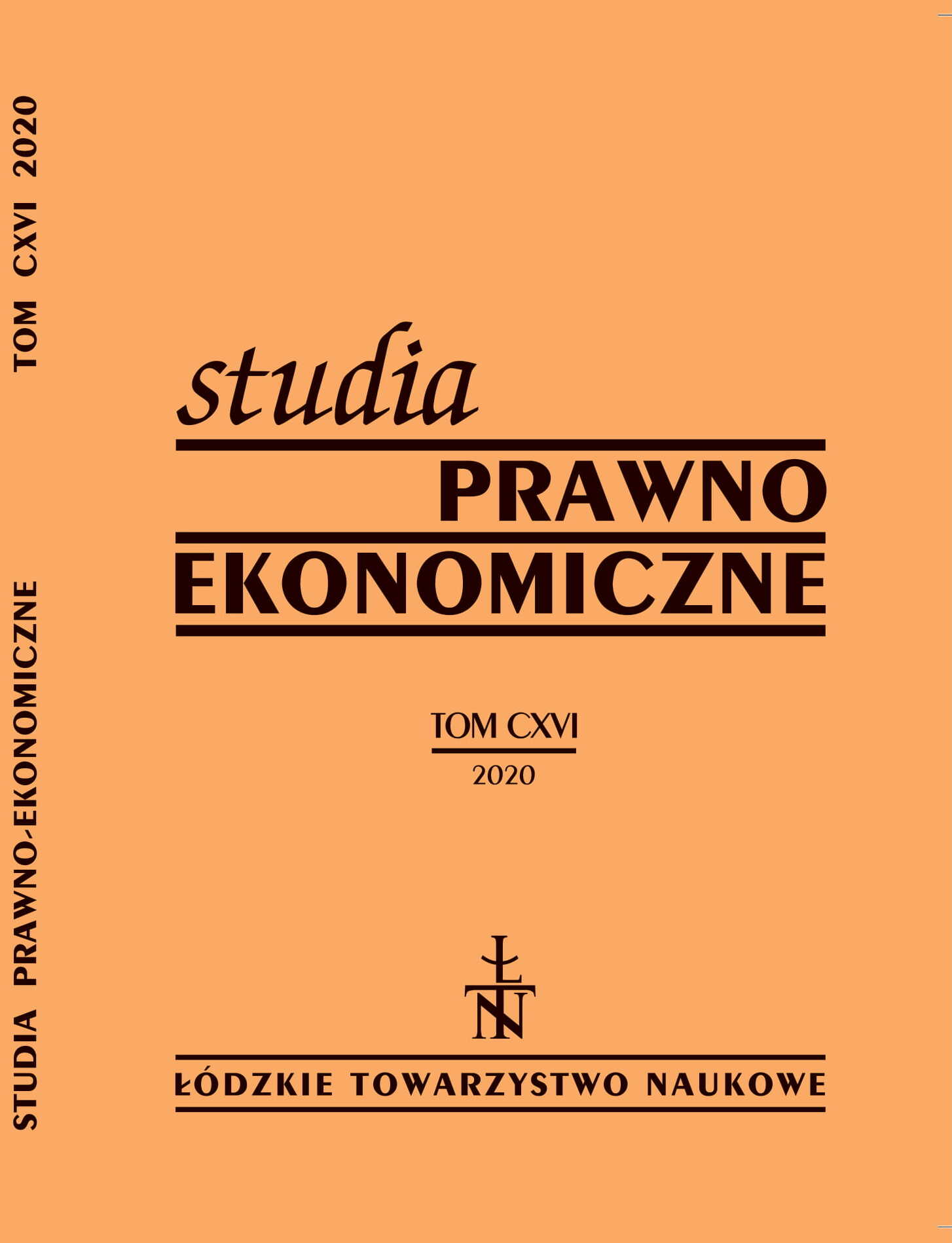Business models of a circular economy
DOI:
https://doi.org/10.26485/SPE/2020/116/14Keywords:
circular economics, resources, loopingAbstract
Background: The concept of a circular economy is attracting more and more attention from the scientific and business community. It represents an alternative way of management for the currently dominant linear system. The traditional “take-use-discard” consumption model cannot be sustainable in the long run. Companies need to adapt their business models to CE-compatible ways of creating, delivering, and capturing values. To achieve positive economic, environmental, and social benefits, companies need to create new business models that separate economic growth from raw material inputs using a circular approach. In a circular economy, products and resources are used for as long as possible, for example by reusing or repairing products – in a linear economy they would be discarded.
Research purpose: This paper presents the concept of a circular economy and its business potential. It also presents examples of how companies around the world sell products and services based on developed circular business models. These best practice examples aim to demonstrate the diversity of business models implemented by companies and the business opportunities in a circular economy that are already being used today.
Methods: This article is the result of a review and analysis of literature and reports on CE objectives and circular business models.
Conclusions: The presented typology of a circular business model gives an opportunity to implement the idea of a closed circuit on a practical level. It should be noted that the types described in the article, together with examples, do not necessarily present full innovations in the business model, but rather key elements of a strategy that contribute to closed-circuit activities. They have separate features, but there are no clear-cut boundaries between them. In order to support companies in achieving the highest possible productivity of natural resources, these strategies can be used individually or jointly.
Downloads
References
Bondaruk J., Kruczek M., Zawartka P., Koncepcyjne ujęcie modeli biznesowych w gospodarce o obiegu zamkniętym, w: J. Kulczycka, K. Głuc (red.), W kierunku gospodarki o obiegu zamkniętym. Perspektywa przemysłu, Wydawnictwo IGSMiE PAN, Kraków 2017, s. 9–17.
Dania: 10 rozwiązań dla gospodarki cyrkularnej, https://www.spcc.pl/node/20358; stan na 10.09.2019 r.
Dyba H., Model biznesowy – istota kategorii, Studia i Prace WNEIZ US 2017/47/1, s. 11–20.
Ellen MacArthur Fundation, Growth within: a circular economy vision for a competitive Europe, Report 2015, https://www.ellenmacarthurfoundation.org/assets/downloads/publications/ EllenMacArthurFoundation_Growth-Within_July15.pdf; stan na 5.10.2019 r.
Ellen MacArthur Fundation, Ku gospodarce o obiegu zamkniętym: Biznesowe uzasadnienie przyspieszonej zmiany, Raport 2015, https://www.ellenmacarthurfoundation.org/assets/ downloads/PL-Towards-a-Circular-Economy-Business-Rationale-for-an-Accelerated-Transition-v.1.5.1.pdf; stan na 5.10.2019 r.
Ellen MacArthur Foundation, Towards Circular Economy: Economic and business rationale for an accelerated transition, Report 2012, https://www.ellenmacarthurfoundation.org/assets/ downloads/publications/Ellen-MacArthur-Foundation-Towards-the-Circular-Economy-vol.1.pdf; stan na 26.09.2019 r.
Ghisellini P., Cialani C., Ulgiati S., A review on circular economy: the expected transition to a balanced interplay of environmental and economic systems, Journal of Cleaner Production 2016/114 (7), s. 11–32.
Gołębiewski J., Systemy żywnościowe w warunkach gospodarki cyrkularnej, Wydawnictwo SGGW, Warszawa 2019.
IMSA, Circular Business Models, Report 2015, https://groenomstilling.erhvervsstyrelsen.dk/ sites/default/files/media/imsa_circular_business_models_-_april_2015_-_part_1.pdf; stan na 5.10.2019 r.
Ionascu I., Ionascu M., Business models for circular economy and sustainable development: the case of lease transaction, Amfiteatru Economic 2018/20 (48), s. 356–372.
Jabłoński A., Odporność modeli biznesu przedsiębiorstw w ekonomii cyrkularnej, https:// oees.pl/wp-content/uploads/2019/02/2.-Odporno%C5%9B%C4%87-modeli-biznesu-przedsi%C4%99biorstw-w-ekonomii-cyrkularnej-A.-Jab%C5%82o%C5%84ski.pdf; stan na 28.09.2019 r.
Kirchherr J., Reike D., Hekkert M., Conceptualizing the circular economy: An analysis of 114 definitions, Resources, Conservation and Recycling 2017/127, s. 221–232.
Korhonen J., Honkasalo A., Seppälä J., Circular economy: the concept and its limitations, Ecological Economics 2018/143, s. 37–46.
Lahti T., Wincent J., Parida V., A Definition and Theoretical Review of the Circular Economy, Value Creation, and Sustainable Business Models: Where Are We Now and Where Should Research Move in the Future, Sustainability 2018/10 (8), https://www.researchgate.net/ publication/326887887_A_Definition_and_Theoretical_Review_of_the_Circular_Economy_ Value_Creation_and_Sustainable_Business_Models_Where_Are_We_Now_and_Where_ Should_Research_Move_in_the_Future; stan na 2.10.2019 r., s. 1–19.
Nesteruk P., IKEA planuje testowanie usługi leasingu mebli na całym świecie w 2020 roku. W Polsce pierwsze testy rozpoczną się już w tym roku! https://ikea.prowly.com/55846-ikea-planuje-testowanie-uslugi-leasingu-mebli-na-calym-swiecie-w-2020-roku-w-polsce-pierwsze-testy-rozpoczna-sie-juz-w-tym-roku; stan na 5.10.2019 r.
Ogunmakinde O.E., Sher W., Maund K., Circular Construction: Opportunities and Threats, https://www.researchgate.net/publication/318336536_Circular_Construction_Opportunities_ and_Threats; stan na 2.10.2019 r., s. 3.
Pichlak M., Gospodarka o obiegu zamkniętym – model koncepcyjny, Ekonomista 2018/3 s. 335–346.
Pichlak M., Kruczek M., Gospodarka o obiegu zamkniętym – stan obecny i perspektywy, Ekonomia XXI Wieku 2017/3 (15), s. 21–31.
Proksa J., Model biznesowy obiegu zamkniętego na przykładzie zagospodarowania ubocznych produktów spalania w układzie kopalnia – elektrownia, Zeszyty Naukowe Politechniki Ślą¬skiej. Zarządzanie Współczesną Organizacją 2018/117, s. 447–458.
Putting theory into practice: Circular Economy Business Models in the EU, https://www.interre-geurope.eu/fileadmin/user_upload/plp_uploads/policy_briefs/PB_on_CEBM_FINAL.pdf; stan na 4.10.2019 r.
United Nations, Department of Economic and Social Affairs, World Population Prospects 2019: Highlights, Report 2019, https://population.un.org/wpp/Publications/Files/WPP2019_Highlights. pdf; stan na 30.09.2019 r.
Witjes S., Lozano R., Towards a more Circular Economy: Proposing a framework linking sustainable public procurement and sustainable business models, Resources, Conservation and Recycling 2016/112, s. 37–44.
Wprowadzenie: przegląd modeli biznesowych GOZ, https://gozwpraktyce.pl/article/przeglad-modeli/; stan na 4.10.2019 r.
WWF, 2016, Living Planet Report 2016. Risk and resilience in a new era, http://awsassets.panda. org/downloads/lpr_2016_full_report_low_res.pdf; stan na 30.09.2019 r.
Zalewski R., Skawińska E., Gospodarka cyrkularna w procesie dostosowania do zrównoważonego rozwoju, w: R. Zalewski (red.), Rola towaroznawstwa w strategii odpowiedzialnego rozwoju, Komisja Nauk Towaroznawczych Polska Akademia Nauk Oddział Poznań, Poznań 2019, s. 31–46.
Zalewski R., Skawińska E., Perspektywa dostosowania gospodarki linearnej w paradygmacie zrównoważonego rozwoju, w: R. Zalewski (red.), Rola towaroznawstwa w strategii odpowiedzialnego rozwoju, Komisja Nauk Towaroznawczych Polska Akademia Nauk Oddział Poznań, Poznań 2019, s. 13–30.
http://we-economy.net/case-stories/vigga.html?fbclid=IwAR0xLYm_xJvlwJrk2RIA_1hyJLE Bhf1wkEIk57vUTlS4lRJj1dxZNNV5PeQ; stan na 5.10.2019 r.
http://www.symbiosis.dk/en/; stan na 5.10.2019 r.
https://blog.blablacar.pl/about-us; stan na 5.10.2019 r.
https://gozwpraktyce.pl/article/repack/; stan na 5.10.2019 r.
https://gozwpraktyce.pl/article/symbioza-przemyslowa/; stan na 5.10.2019 r.
https://vigga.us/produkter/pige; stan na 5.10.2019 r.
https://www.airbnb.pl/trust; stan na 5.10.2019 r.
https://www.originalrepack.com/service/; stan na 5.10.2019 r.



